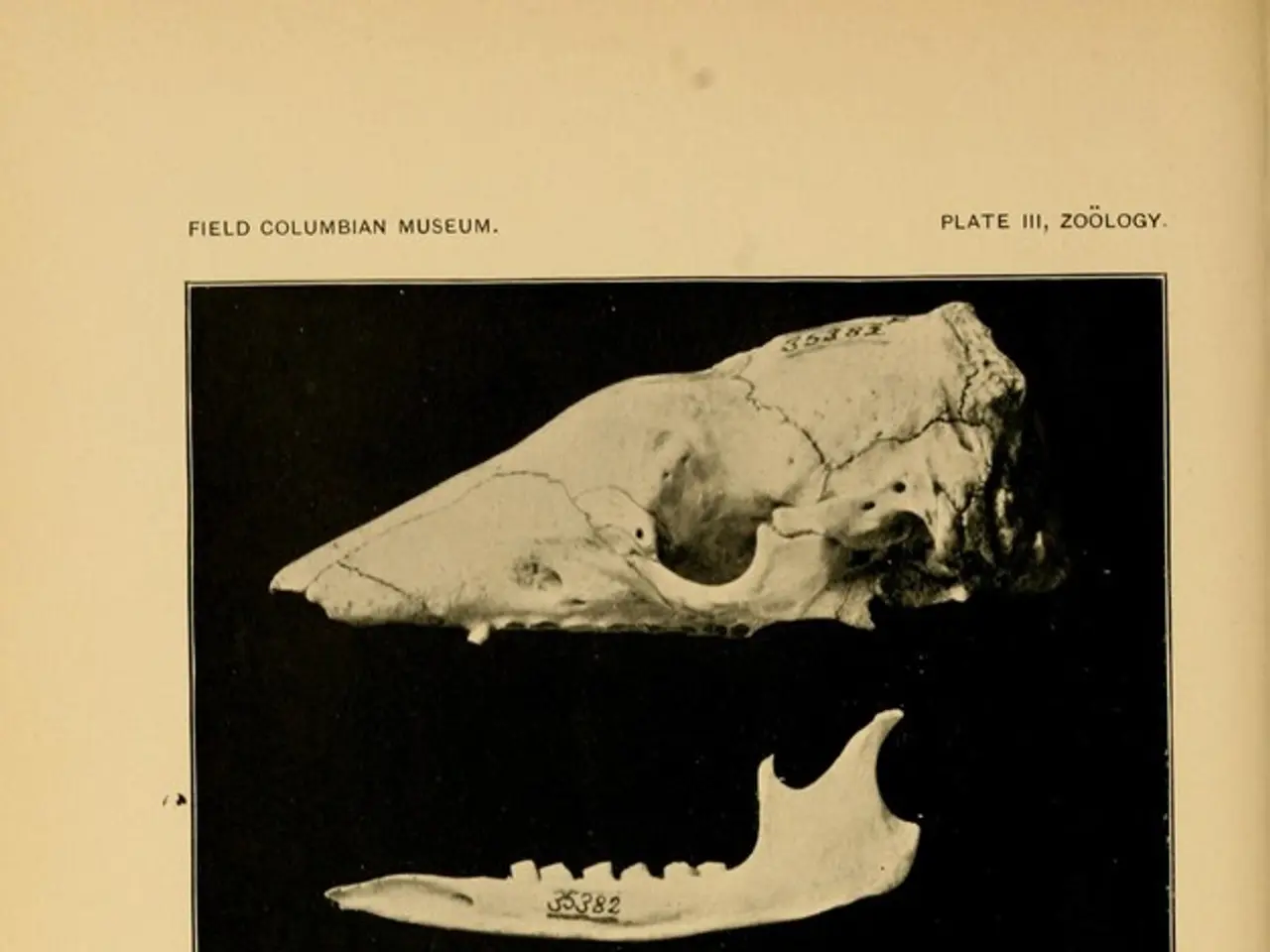Osteoporosis can be indicated by a T-score value of -2.5 or lower.
A T-score is a crucial indicator of bone health, representing the standard deviation from the average bone density of a healthy 30-year-old. Here's what your T-score means:
- A T-score of 0 indicates a person's bone density is the same as an average 30-year-old.
- A T-score of -1 means a person's bone density is about 10% less than the average 30-year-old. Each standard deviation represents approximately 10-12% difference in bone mass.
- T-scores of -2.5 or less indicate osteoporosis, a condition that affects many people as they age and can also result from other conditions that cause bone density loss.
Risk factors for osteoporosis include increasing age, history of a broken bone after age 50, previous surgery to remove the ovaries before menstruation periods stopped naturally, family history of broken bones or osteoporosis, smoking, altered levels of hormones, poor dietary habits, lack of physical activity or prolonged bed rest, heavy drinking, underweight or low body mass, and long-term use of certain medications.
Improving T-scores involves building stronger and denser bones by eating foods with bone-supporting nutrients, avoiding smoking, staying physically active, limiting alcohol consumption, treating any underlying inflammatory conditions, and maintaining a balanced diet. A person will need to take steps to treat the condition to help improve bone density and reduce their risk of bone fractures.
A healthcare professional compares a person's T-score to that of a healthy 30-year-old to assess bone health. For context, T-scores classify bone density status as follows:
- Normal bone density: T-score ≥ -1.0
- Osteopenia (low bone density, not osteoporosis): T-score between -1.0 and -2.5
- Osteoporosis: T-score ≤ -2.5
It's important to note that some patients with fragility fractures have T-scores between -2.0 and -2.5, suggesting fracture risk may extend into this range. However, the traditional diagnostic cut-off for osteoporosis remains ≤ -2.5.
A Z-score, on the other hand, compares a person's bone mass to peers who are the same age and sex. It's particularly useful for diagnosing secondary osteoporosis that may occur due to medications or other health conditions, particularly for children, young adults, premenopausal females, and males under the age of 50.
Most people reach peak bone mass around the ages of 25-30. After age 40, most people start to lose bone mass. If you have concerns about your bone health, it's always a good idea to consult with a healthcare professional who can perform a bone density test (DEXA scan) to determine your T-score and provide guidance on maintaining or improving your bone health.
- The science of health and wellness in the workplace highlights the importance of addressing medical conditions such as osteoporosis, a chronic disease that can affect bone health.
- Osteoporosis, a condition characterized by weak and brittle bones, can be a risk for people beyond their old age due to factors like smoking and poor dietary habits.
- Besides osteoporosis, other chronic diseases like cancer, respiratory conditions, digestive health issues, eye health problems, and hearing impairments are often linked with treating health and wellness.
- Skin care, sexual health, autoimmune disorders, mental health, men's health, and women's health are essential aspects of holistic health and wellness concepts.
- Fitness and exercise, nutrition, and weight management play a crucial role in maintaining cardiovascular health and overall well-being.
- Medicare plans may include coverage for therapies and treatments aimed at preventing and managing various health and wellness issues, including osteoporosis.
- Aging is a natural process that can bring about changes in bone health, making it essential to prioritize preventing and treating age-related health issues.
- Parenting involves taking steps to ensure the overall well-being of children, including maintaining their digestive health, eye health, and skin care.
- Despite its concentration on bone health, T-scores can provide valuable insights into underlying health issues like autoimmune disorders and hormone imbalances.
- Z-scores, used for diagnosing secondary osteoporosis in specific age groups, provide a comprehensive picture of bone health by comparing a person's bone mass to their peers of the same age and sex.
- When it comes to addressing skin conditions or improving overall skin care, seeking advice from dermatologists and consultants can provide personalized strategies.
- Consulting a healthcare professional about any concerns related to bone health, aging, or conditions like osteoporosis is essential to receiving the right diagnosis and developing an effective treatment plan.
- Regularly monitoring and addressing mental health concerns, such as anxiety and depression, can complement efforts to maintain bone health and overall well-being.
- Actively participating in fitness and exercise routines, eating a balanced diet, and seeking professional help when needed can help people of all ages maintain good bone health and ensure their overall health and wellness.




